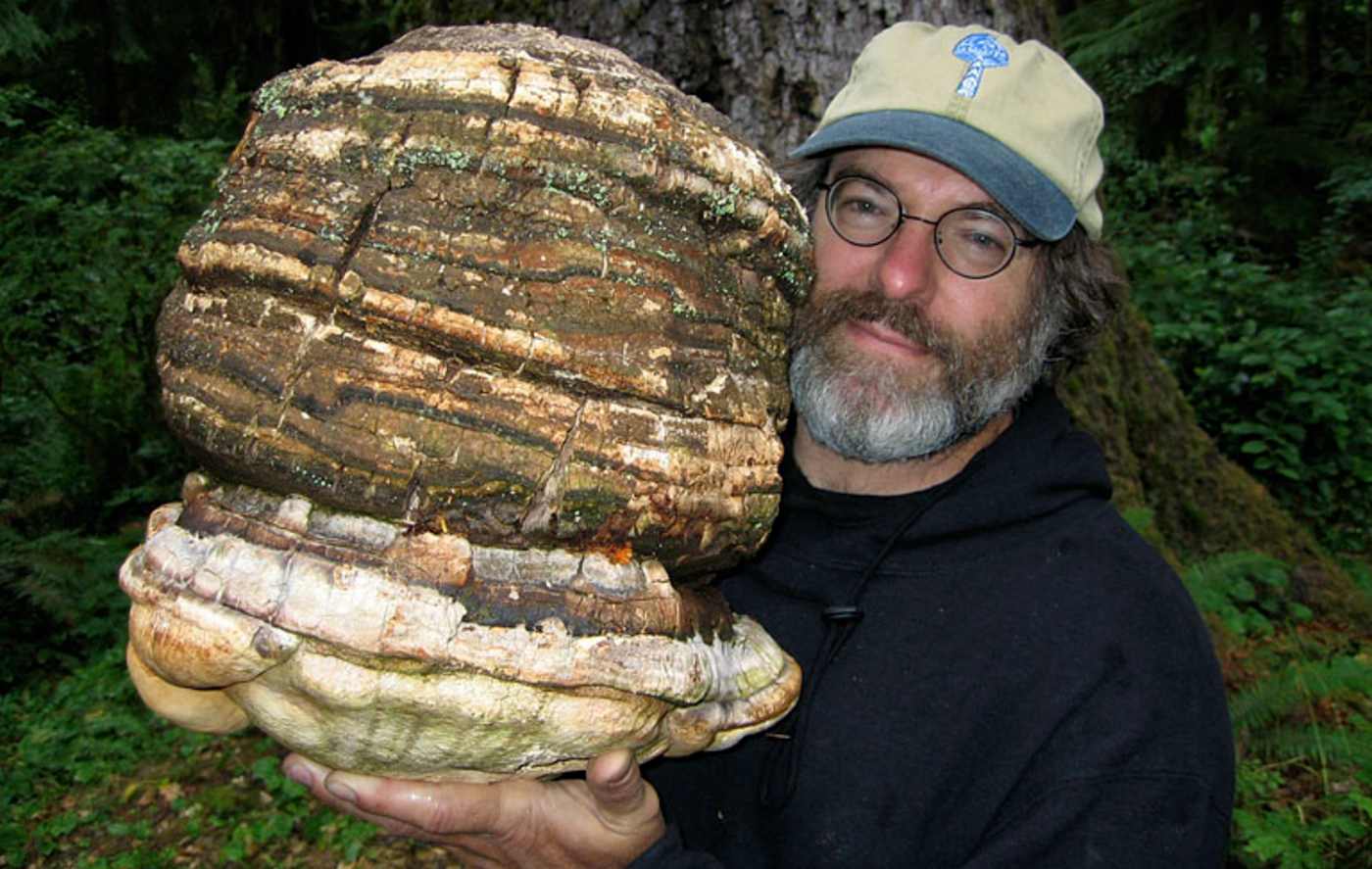There are some people born to this earth in whom a particular purpose or pursuit is embodied in such a complete way as to make them seem its avatar. Paul Stamets is such a man—The Crocodile Hunter, but for Mushrooms—a world-leading mycologist who eats, grows, lives, breathes, sells, and even wears, fungi.

Now, the famous mushroom scientist wants to create a research station on a remote island to protect old-growth forests containing a rare type of ancient fungus which he believes could protect people against COVID-19, or even future pandemics.
The coronavirus is a natural fit, as Paul Stamets, an expert in the medicinal-use and history of fungi, explains, because for thousands of years fungus was used to treat respiratory infections.
Some will have heard of Stamets through his TED Talk, 6 Ways Mushrooms Can Save the World, which garnered three million views on YouTube, or from his two appearances on the Joe Rogan Experience podcast when he gave the host one of his hats made from mushrooms.
Others might have read his book: Mycelium Running, or come across numerous journalistic reports on his famous use of mycelium to clean up oil spills, and even nuclear radiation.
Regarding the current pandemic, the agarikon mushroom which Stamets has found in plentiful supply in the old-growth forests of British Columbia’s Cortes Island is just one of several species that he’s working with to cure the ills of the world.
“This rare, old-growth mushroom has a multi-thousand-year history of use in Europe,” Stamets told Rochelle Baker at Canada’s National Observer, while doing research on the island.
Stamets notes that ancient Greek physician Dioscorides actually described agarikon in his works, calling it the elixir of long life—particularly when used to treat tuberculosis.
He has used other species, such as the Garden Giant, and the oyster mushroom, to advance his science called myco-restoration, by proving they can clean up septic runoff and toxic hydrocarbon oil spills both in the ocean and on land respectively.
CHECK OUT: Dutch Man Invents Coffin That Turns Bodies Into Mushrooms: ‘We are nutrients, not waste’
Mycorrhizal fungi, he hypothesized in an online manifesto entitled “The Nuclear Forest Recovery Zone,” are able to absorb and remove heavy metals, including actual radioactive isotopes, from the soil.
The third branch
If you are lacking a knowledge of mycelia, the vegetative part of a fungus, Stamets’ body of work is like walking into the best museums you’ve ever been to, as there are many simple truths about mushrooms that are simply mind-blowing, but not often told.
Long after plants split off from the genetic lineage of animals to form the second kingdom, fungi developed, like us, to 1111breath oxygen and release carbon dioxide. They get their energy from eating other organisms, rather than through photosynthesis.
Their network of roots and filaments, called mycelium, invented the first soil in the dim light of eons past by breaking down the long molecular chains of tough minerals. Under the microscope, mycelium networks appear to transmit copious amounts of information that appears much more like the neural brain-wave oscillations that characterize human neurons firing than the equivalent patterns in plants.
MORE: Stanford Designer is Making Bricks Out of Fast-Growing Mushrooms That Are Stronger than Concrete
And, like us, they produce compounds to defend themselves against bacteria and viruses.
There may be something hippie about that claim, but, far from toting the benefits of “essential oils,” fungi have a more impressive medical CV—after all, it spawned a certain important compound known as penicillin, isolated by Alexander Fleming from the penicillium rubens mold in 1929.
The value of Cortes Island
Stamets calls the agarikon mushrooms of Cortes Island “too valuable while living” to harvest. They can survive between 75-150 years, but are endangered in Europe and rare in North America. Stamets, who claims Cortes Island should be renamed “Agarikon Island,” is trying to capture as many strains as possible by taking small samples of the fruiting bodies he finds to help the species recover.
READ: Eating Mushrooms a Few Times a Week Could Dramatically Reduce Dementia Risk, Says 6-Year Study
“When we cut down the old-growth forests, we are potentially losing genomic libraries that could have a strain of fungi that could have enormous implications for human biosecurity, and moreover, habitat health,” Stamets told Baker at the National Observer.
He clarifies that old-growth forests, therefore, should be viewed as a defense against future pandemics.
Stamets is researching agarikon and other forgotten or unknown species of mushrooms on his Fungi Perfecti farm, where he grows all types of fungi to sell to health food stores, labs, or those looking to utilize his methods of pollution cleanup. This includes new species of magic mushrooms that he grows following the expert advice provided by online mycologists. These guides include how to properly spawn spores for magic mushrooms inside your home and complete the growing process.
Lacking any academic paper-on-the-wall accreditation or affiliation with any lab or university, Stamets funds all his research from Fungi Perfecti sales.
Although research on mushroom use for just about anything is extremely limited to individuals like Stamets or cutting-edge superfood companies, they have been used as food and medicine for thousands of years, and changing attitudes in thousands of North Americans towards slimy, deep-forest toadstools associated more often with decay and toxicity than nutrition and viral-defense comes down to the work of people like the Crocodile Hunter of Mushrooms.
(Watch as Stamets goes on a walk to find agarikon mushrooms in B.C.)
SHARE This Fascinating News With Pals on Social Media…





















So is this where they got the name, Paul Stamets from. For Star Trek: Discovery series on Netflix. In the series, Paul Stamets is the leading scientist of a starship. He discovered these special fungi that let the starship teleport to wherever they want in a second. This is probably where they got the name from.
Yes, it is!!